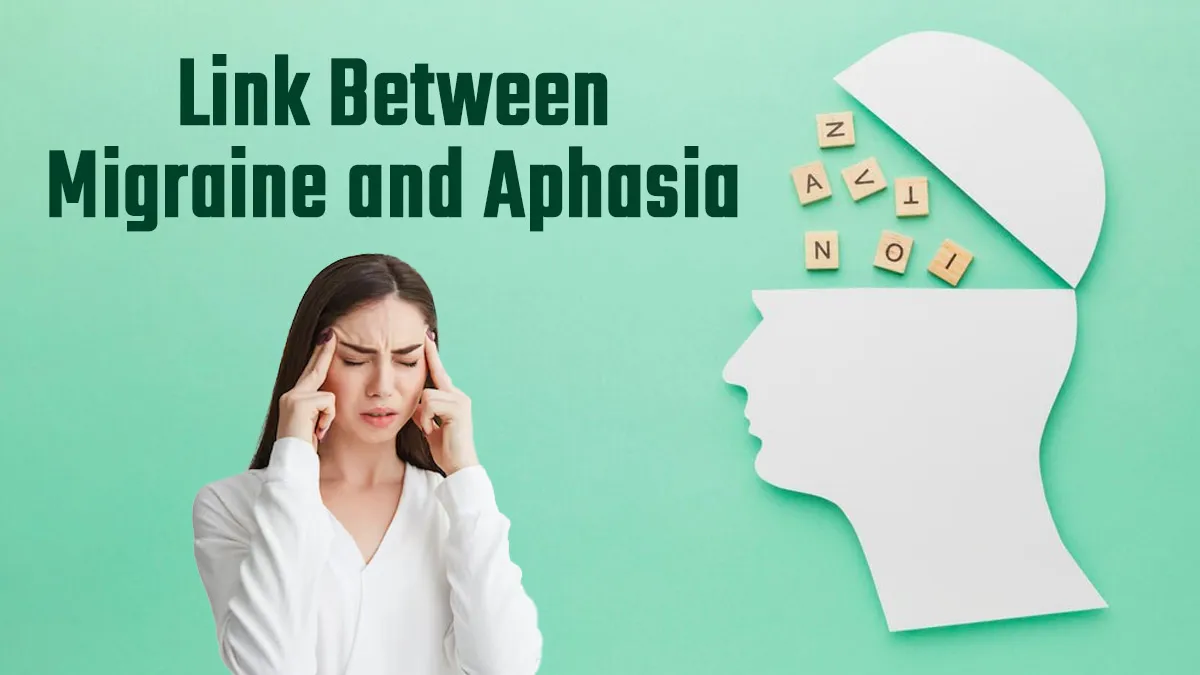
Migraines are more than just severe headaches. They can disrupt daily life, causing nausea, sensitivity to light, and even temporary language problems. But can migraines lead to aphasia, a condition that affects communication? Aphasia is a language disorder caused by damage to the brain’s language centres. It impacts speech, comprehension, reading, and writing. While migraines are not a direct cause of aphasia, certain types, like migraines with aura, can mimic its symptoms temporarily. Read ahead to explore the connection between migraines and aphasia, how severe headaches affect communication, and what experts say about this complex relationship.
Table of Content:-
CHECK YOUR
MENTAL HEALTH

What Is Aphasia?

Dr Agnetia Vinoth, Consultant, Neurosurgery, Apollo Spectra, Chennai, explains, “Aphasia is a condition that hinders one’s ability to communicate, affecting speech, comprehension, reading, and writing. It occurs due to damage to the brain’s language centres, often altering life overnight.”
Can Migraines Cause Aphasia?
While migraines are not a direct cause of aphasia, they can temporarily mimic its symptoms, according to the expert’s inputs. Migraines with aura, in particular, are known to cause language difficulties. During an aura, individuals may experience:
- Trouble speaking or finding words.
- Difficulty understanding others.
- Confusion or disorientation.
These symptoms are usually temporary and resolve once the migraine subsides. However, in rare cases, severe or prolonged migraines could potentially lead to brain changes that might contribute to language problems.
A study published in The Journal of Headache and Pain found that migraines with aura are associated with changes in brain structure and function. While the study did not directly link migraines to permanent aphasia, it highlighted the potential for temporary language disruptions during attacks.
ALSO READ: What Is Medulloblastoma? Expert Shares Symptoms, Causes, and Treatment
Understanding the Connection
-1739877135258.jpg)
According to a study, during a migraine aura, the brain goes through changes in blood flow and electrical activity. These changes can temporarily affect areas of the brain that help with language, leading to a condition called aphasia. Unlike chronic aphasia, which lasts a long time, aphasia related to migraines is usually temporary and goes away within one or two days, depending on how long the migraine lasts. About 25 to 30 percent of people who get migraines experience them with aura. The most common aura symptoms include visual issues, like seeing flashing lights or feeling tingling in the arm. However, transient aphasia is another less common symptom.
Duration and Timing
The study claims that migraine-related aphasia typically lasts from a few minutes to an hour, depending on the duration of the aura, but sometimes it can persist for the entire migraine episode. In some instances, aphasia can last as long as the migraine itself, even up to a few days, particularly if there are underlying health issues. Milder aphasia symptoms may also occur well before the migraine attack, during the prodrome stage, or in the postdrome phase following a migraine
When to Seek Medical Attention

Aphasia appearing without a prior diagnosis is considered a medical emergency and requires prompt evaluation by a healthcare professional. It's crucial to seek immediate medical attention if sudden aphasia occurs with other stroke symptoms. Furthermore, if it’s the first time experiencing aphasia symptoms, consulting a doctor or neurologist is recommended for a comprehensive medical history and potential tests, like an MRI or CAT scan, to rule out other conditions.
ALSO READ: Are Fast Walkers More Stressed? Study Answers Do Depressed People Walk Slower
Conclusion
While migraines are not a direct cause of aphasia, they can temporarily disrupt communication, especially during migraines with aura. Aphasia itself is a serious condition caused by brain damage, often due to stroke, injury, or degenerative disorders. If you experience persistent language difficulties, consult a doctor to rule out underlying causes and explore treatment options.
Also watch this video
How we keep this article up to date:
We work with experts and keep a close eye on the latest in health and wellness. Whenever there is a new research or helpful information, we update our articles with accurate and useful advice.
Current Version